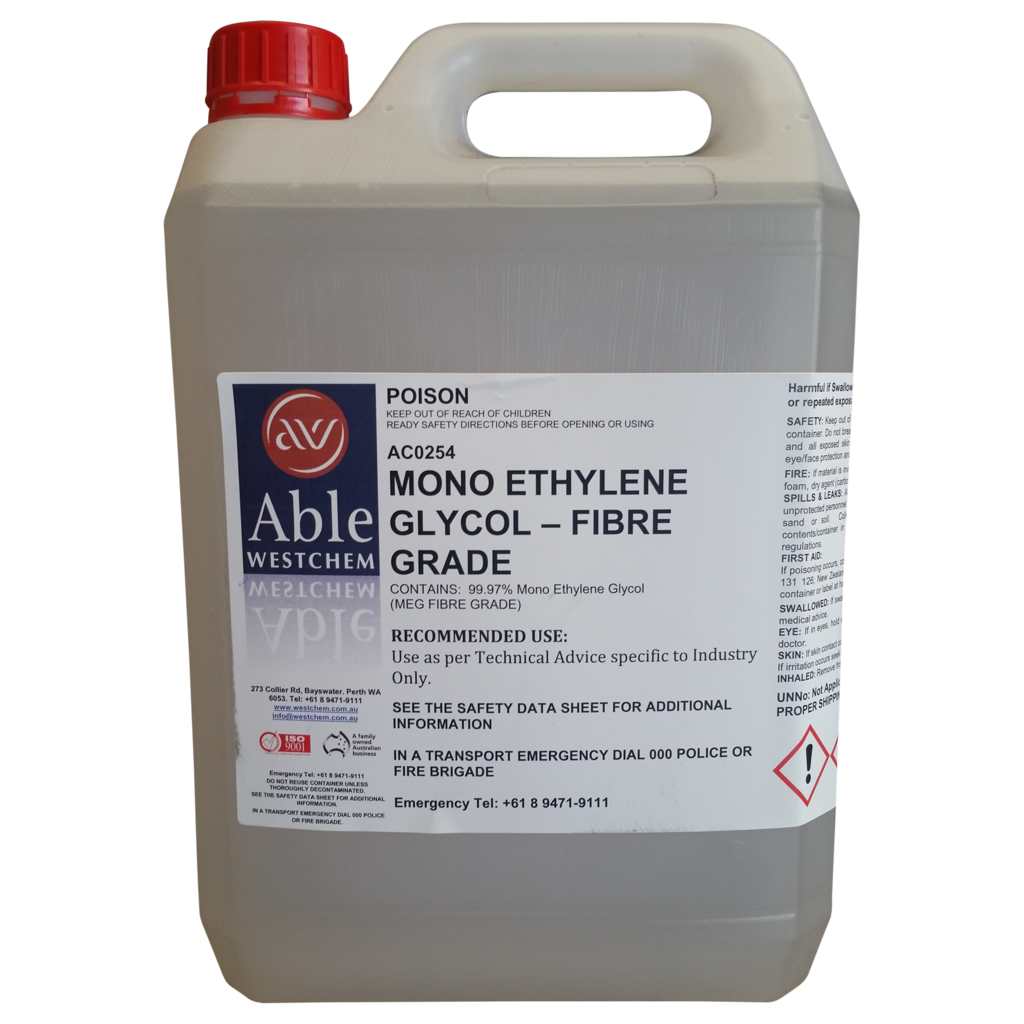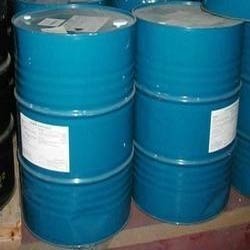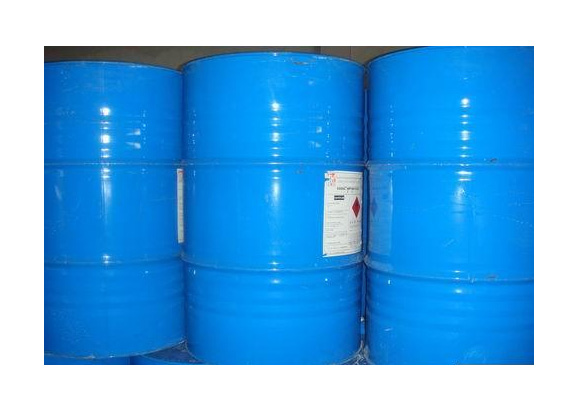Ethylene Glycols
Ethylene Glycols- Ethylene glycol -C2H6O2 is a chemical commonly used in many commercial and industrial applications including antifreeze and coolant. Ethylene glycol as heat transfer fluids is used as industrial coolants for gas compressors, heating, ventilating, and air-conditioning systems, and ice skating rinks.
Ethylene glycol also is used as a raw material ( key intermediates) in the production of a wide range of products including polyester fibers for clothes, upholstery, carpet and pillows; fiberglass used in products such as jet skis, bathtubs, and bowling balls; and polyethylene terephthalate resin used in packaging film and bottles and also used in everything from antifreezes and plasticisers to glues.. Many of these products are energy saving and cost efficient as well as recyclable.
MEG, by far the largest volume glycol, is produced by the direct hydration of ethylene oxide (EO). Smaller amounts of DEG and TEG are co-produced in this process, although additional quantities of DEG and TEG can be produced by further reacting MEG with additional EO.
The three ethylene glycols are colourless, essentially odourless stable liquids with low viscosities and high boiling points and have many similar chemical properties. Differences in their applications are due mainly to variations in physical properties such as viscosity, hygroscopicity and boiling point.
MEG

C2H6O2-Monoethylene glycol (Ethylene glycol) is a colorless, virtually odorless and slightly viscous liquid. It is miscible with water, alcohols, aldehydes and many organic compounds. MEG will not dissolve rubber, cellulose acetate or heavy vegetable and petroleum oils. MEG has a low volatility and it is 50% more hygroscopic than glycerol at room temperature.
Most MEG reactes with para-terephthalic acid (PTA) to produce polyester fibres for textiles and garments and polyethylene terephthalate (PET) plastics for food and drink packaging. Engine coolant in automobile antifreeze is another smaller but important application area, while the excellent humectant (hygroscopicity) property of MEG also makes it ideal for use in fibres treatment, paper, adhesives, printing inks, leather and cellophane films.
Handling and storage:MEG is stored and shipped in stainless steel tanks (or in ordinary steel drums/tanks with epoxy resin coating) to avoid iron contamination. Where contamination by iron is desirable, metal in contact with the glycol should be aluminum or stainless steel (type 304/316). If contamination by halides is undesirable, the packing of the valves and the gaskets should be made of asbestos or other halide-free materials. Also, an inert gas (nitrogen) blanketing should be maintained to avoid oxygen contact which is a main course of U.V. deterioration. MEG is loaded after thorough cleaning and drying of tanks and nitrogen purging to ensure that it remains chloride, iron, and ash-free. Shipments are made in tanks, tankers of varying capacities and in lined steel drums (220 liters). MEG is not considered to be a health hazard when handled under normal industry conditions. It has a relatively low degree of acute and chronic oral toxicity and the average fatal dose is 100 ml for adults. It is only slightly irritating to the eyes and skin.
DEG

DEG is a straight-chain dihydric alcohol aliphatic compound terminated on both ends by a hydroxyl group. It is a clear, water-white, practically odorless, hygroscopic liquid at room temperature. (HOCH2CH2)2O.
Diethylene glycol is used as a dehydrating agent for natural gas; a raw material for the production of plasticizers and polyester resins; a humectant; a textile lubricant and coupling agent; a solvent in textile dyeing and printing; a constituent of hydraulic fluids; a plasticizer for paper, cork and synthetic sponges; a solvent in printing inks; a raw material for the production of esters used as emulsifiers, demulsifiers, and lubricants; a selective solvent for aromatics in petroleum refining.
Handling and storage:Diethylene glycol (DEG) is a stable, non-corrosive chemical with high flash point. It has a tendency to increase in color and acidity (accompanied by drop in pH) upon long-term storage. Peroxides may also form causing difficulties when DEG is used as a chemical intermediate. To minimize this quality deterioration, store the DEG in stainless steel, aluminum or suitably lined (vinyl type lining like Amercoat 23 or equivalent) tank under an inert gas pad (preferably nitrogen). For temperatures below +40°F, provide low-pressure stainless steel steam coils in storage tanks and steam/electrical tracing of insulated transfer lines to ease pumping. Avoid temperatures above 120°F to prevent product degradation. Flushing with water and steam can readily clean transfer or storage tanks.
TEG

TEG is a straight-chain dihydric alcohol aliphatic compound terminated on both ends by a hydroxyl group. It is a clear, practically colorless and odorless, hygroscopic liquid at room temperature. HOCH2CH2(OCH2CH2)2OH
The main uses for TEG depend upon its hygroscopic properties. It is employed as a liquid desiccant for the dehydration of natural gas and as a dehumidifier in air conditioning systems. TEG also finds use as a vinyl plasticiser, as an intermediate in the manufacture of polyester resins and polyols, and as a solvent in many miscellaneous applications.
Handling and storage: Triethylene glycol (TEG) is a stable, non-corrosive chemical with high flash point. Since it is hygroscopic, storage vessels must be designed to minimize moisture pickup. Other possible contaminants are iron and oxygen. For longer-term storage, or where iron contamination and color are objectionable, resin linings or stainless steel and aluminum vessels are recommended. Linings based on phenolic and epoxy resins are satisfactory. Zinc or zinc alloys should not be used in glycol service. For longer-term color stability, it is recommended that the product be stored under an inert atmosphere.
Whatever your needs are gz-supplies can provide a full range of chemicals including services
Recent Posts
-
Press Release: Same Great Lube, Less Waste: Lubemax 50:50 makes the Switch to Sustainable Packaging
In a move towards environmental responsibility, Epoxy Oilserv Nigeria Limited is proud to announce t …Apr 23, 2024 -
Top 8 Generators Recommended by Professionals in Nigeria (Reviews)
Generators can keep your home or business running with your essential equipment until the power is b …Apr 23, 2024 -
Transformer Safety: Preventing and Managing Common Hazards
Transformers are critical components in the electrical distribution system, handling high volt …Apr 23, 2024


